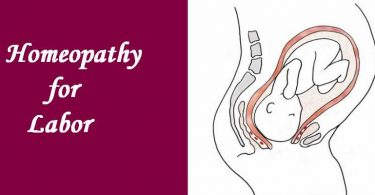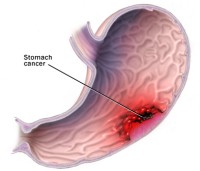From: Heal Thyself, March, 1943
Peptic ulcers of the stomach are very frequent; many of these cases have been wrongly diagnosed as indigestion, cramps or neurosis of the stomach. The ulcer, in the majority of cases, is located on the posterior wall of the pyloric part of the stomach. It is more common among women than among men. The cause of the disease is not sufficiently known. Hyperacidity of the stomach may be responsible for a number of cases. Too hot drinks, irregular meals, external injuries to the stomach wall, disorders of the vegetative nervous system, or septic conditions of the teeth, appendix or gall-bladder may lead to the development of ulcer in other cases.
As a rule, the symptoms develop very slowly. In some cases there is no subjective symptom at all. The first symptom is a dull pain under the heart-pit, increased by outward pressure or after eating spiced or hardly digestible meals. The pain radiates to the back, either to the hip, vertebral column, or to the shoulder blade. It usually starts a few minutes after a meal, continuing during the whole digestive process for about 1 to 2 hours, decreasing after vomiting. The dull pain is burning and usually coupled with heartburn. If the heartburn continues for a longer period, the pain develops into real cramps of the stomach, now and then increased to agonizing colics, continuing for days and thus preventing any taking of food. In women the cramps usually set in immediately before the menstruation.
Later on the pain is localized in the middle of the epigastrium under the lower end of the breast bone. In chronic duodenal ulcer the pain is felt a little to the right, starting about 2 to 4 hours after a meal or it wakes the patient up in the early morning; the pain is always relieved by taking food and is well known under the name ” hunger-pain “. Vomiting is a rather rare symptom; as a rule, it only occurs in cases of hyperacidity. In these cases loss of appetite is rare, but bulimia is rather frequent, always giving the patient relief.
These subjective symptoms are most significant: first of all their periodicity, the late pain and the nightly hunger-pain. The burning late pain starts, as a rule, 2 to 4 hours after a meal in cases of duodenal ulcer, later in cases of stomach ulcer. The even more intensive hunger-pain starts some hours later and can easily be stopped by eating, especially butter. The early pain (up to 1 hour after a meal) is less frequent and, as a rule, a symptom of a stomach ulcer, due to the sensitiveness of the ulcer itself. Between these types of pain there are all kinds of transitions. In elderly patients there may even be no pain at all.
A suspicious symptom for ulcer is the vanishing of flatulence complaints after eating. Generally the pains stop for a few weeks after a profound bleeding coupled with vomiting of blood, or dark stools. Hemorrhage (bleeding of the stomach) is the most important objective symptom. It may be accompanied by vomiting of the blood, or it occurs without any vomiting. The quantity of the blood varies a great deal. It may be very profuse, up to one litre or even more, or it may be restricted to such a little that it can only be found by microscopic examination (occult bleeding). In many cases the blood gets evacuated with the stools. In this condition the blood changes its colour, changing to dark brown, or even brownish-black, the stools looking tar-like.
In exceptional cases immense quantities of blood are evacuated with the stools only, especially in cases of duodenal ulcer. These patients show the characteristic symptoms of great blood losses such as small rapid pulse, very small pupils and cold perspiration . X-ray examination of the stomach is the most valuable diagnostic aid, though not absolutely decisive, because there
are cases of ulcer without a positive X-ray result. The most dangerous complication of the disease, apart from severe bleeding, is the perforation into the abdominal cavity: sudden, agonizing, continuous pain, starting in the epigastrium and spreading over the abdomen, rapid, weak pulse, cold perspiration, vomiting and shock are the most alarming symptoms. The temperature is sub-normal at first, rising later. The abdomen is rigid, tender and retracted at the beginning, becoming distended later on. Unless the patient is operated on at once, a fatal peritonitis or an abscess under the diaphragm develops.
Treatment of ulcer – Considering the great variety of objective as well as subjective symptoms, the treatment should in accordance with homeopathic principles be an individual one only. That applies also to the dietetic treatment. Generally speaking we must differentiate between bleeding and non-bleeding ulcers. The non-bleeding ulcers require neither a careful diet , nor rest in bed . It goes without saying that in cases of acute bleeding, fasting is necessary. The patient has to stay in bed and hot wet compresses should be applied to the region of the stomach.
Homceopathic drugs should supplement the dietetic treatment. A very great number of drugs can be considered in accordance with the great variety of symptoms. Many of these drugs have been characterized in a previous article on hyperacidity and dyspepsia. In addition the following should be thought of:
Uranium nit – Thirst, sleeplessness, ·weakness, especially indicated in cases where the ulcer is located near the pylorus.
Argentium nit – in amemic patients.
Arsenicum alb – Dry, reddened tongue, thirst, exhaustion.
Kali bich – Vomiting, burning pain, digestive disorders due to heat.
Anacardium – Irritable, bad tempered patients, increased salivation, nausea, chilliness. Better by exposure to the heatof the sun.
Abies nigra –Feeling of fullness and pressure in the stomach.
Bismuthum sub – Stomach pains after eating, relieved by bending backwards.
Carbo veg. – Pressure in the stomach, distress and tightness in the abdomen, better after eructation and passing of flatus ; burning pains ; aversion to fat and fat pork.
Ignatia – Improvement from eating, nervous patients with changeable moods. Constipation with ineffectual urging.
Nux vom – Constipated patients, all troubles aggravated in the morning, after eating. Cutting, burning pains, physical weakness.
Iris vers or Robinia pseudac – Sour eructations, vomiting, causing teeth to feel dull. Hyperacidity.
Capsicum – Indolent plethoric patients with burning pains.
Bryonia – Sensation of a heavy load in the stomach, especially after meals; intolerance of fat and motion. Violent thirst, bitter taste. Choleric, lean patients with yellowish face, mental irritability, perspiration. Aggravation when walking in fresh air, by touch, in the night and morning; better by pressure or lying on the diseased site. Hard, dry stools.
Pulsatilla – Pressure and pain in the stomach after the slightest meal. Thirstless, chilly patients; all symptoms aggravated by warmth, indoors; better in the open air, when moving.
Nat. mur – Colics in the stomach, aggravated in cold and wet weather, better in dry and warm weather; periodicity of all symptoms. Faintness and weariness.
If the homeopathic treatment does not achieve a lasting cure, we must take into account the danger of a perforation and the patient should be put under the care of a conservative surgeon, who should immediately interfere when danger is imminent. The operation is indicated only in a case of perforation, or in cases of a very profuse bleeding. In the latter however, the operation should not be performed at once, but after a few weeks or months, only if the blood hemoglobin shows 60 per cent of its normal and the patient does not recover. Statistics prove that at least two-thirds of all cases can be cured by homeopathic and dietetic treatment. The thoughtless advice to operate is thus unpardonable, the more so as the operation, though it removes the ulcer, can never cure the ulcer disease. I know dozens of cases, where a few months after an operation, new ulcers developed.






It is a wonderful and vivid discussion on the topic making it easy to every reader. Thanks.
thank you sir got few knowledge